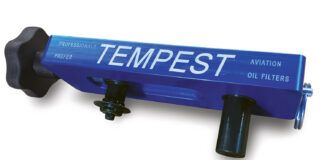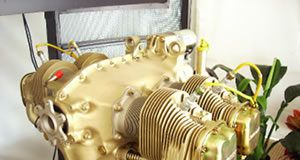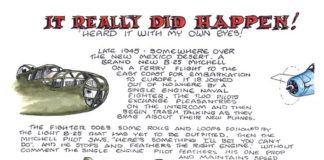Keen on Keenserts
I just read Steve Ells’ article on threaded inserts [September 2012]. Good info. I did wonder why there was no mention of Keenserts, as they’re similar to the Heli-Coils for repairing damaged holes. Is there a difference in fatigue performance or tensile strength that would preclude Keenserts from being used? I installed a metric Keensert into a Rotax 912 case at a bed-mount attach point 500 hours ago with good results so far, but if there’s an issue I’m unaware of, I would like to be informed.
Bob Hartunian
Steve Ells responds: Thanks for the question. The research I’ve done regarding Keenserts shows that these inserts are very high-quality hardware. I believe your choice of the Keensert was sound. The only reason I did not mention the Keensert option was that I chose to write about the products I have used rather than each of the inserts on the market.
Taking Heat
Thanks for the excellent article on the firewall [Firewall Forward, September 2012]. However, I was wondering about how effective it really is in the whole scheme of things. That is, when the cowling can only take 500-700°, what does it matter that the firewall can take 2000°? It would seem that a design that allowed the heat and smoke to vent out of the engine compartment in an emergency might be just as important or even better than a great firewall.
Frederick Lowe
Dave Prizio responds: There’s no doubt that an engine fire will eventually burn away the cowling, but a solid firewall gives the pilot time to get on the ground before the whole plane is lost. Smoke and heat will naturally be vented out the cowl exit until the cowl is consumed, at which point they will go wherever they want to. The idea is to make sure heat and smoke don’t get to the pilot and passengers for at least 15 minutes if possible. The firewall system merely buys you time. It will fail if the fire is not extinguished, but hopefully after the plane is safely on the ground.
How to Make a Sandwich
I just finished reading the Sept ’12 installment of Dave Prizio’s Firewall Forward series. The series has been very good and very informative, and “Installing the Firewall” is excellent. But I have a question on a statement he made. He states that when building a composite or (as in my case) wood airframe, the firewall should consist of a sandwich of plywood, stainless steel, Fiberfrax and an aluminum coversheet to protect the Fiberfrax. Why can’t Fiberfrax be sandwiched between the plywood and the stainless steel? This would still insulate the wood from the potential high temperatures of the fire-heated steel and eliminate the weight, expense and effort of fabricating the aluminum coversheet.
Dave Hoehn
Dave Prizio responds: The problem with that arrangement is the Fiberfrax gets sandwiched between the engine mounts and the airplane structure (not too solid) or it must be eliminated at those points, making a clear path to transfer heat to the wood structure. With the setup recommended in the article, the holes in the Fiberfrax and aluminum cover can be filled with fire-resistant caulking, giving better protection to the wood structure.
Write to [email protected] or mail a piece of your mind to:
KITPLANES, P.O. Box 315, Ashland, OR 97520.




